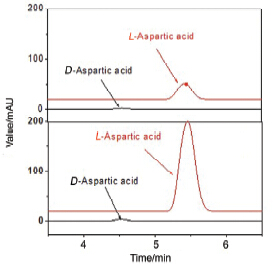| [1] Ulman, A.Chem.Rev.1996, 96, 1533.[2] Ma, X.L.; Yang, H.F.; Sun, X.J.; Zhu, J.; Ji, J.H.; Zhen, Y.Q.Acta Chim.Sinica 2007, 65, 1617.(马晓玲, 杨海峰, 孙晓靖, 朱筠, 纪佳华, 郑雅琴, 化学学报, 2007, 65, 1617.)[3] Wang, X.F.; Ingall, E.; Lai, B.; Stack, A.G.Cryst.Growth Des.2010, 10, 798.[4] Ejgenberg, M.; Mastai, Y.Chem.Commun.2011, 47, 12161.[5] Dressler, D.H.; Mastai, Y.Cryst.Growth Des.2007, 7, 847.[6] Singh, A.; Lee, I.S.; Kim, K.; Myerson, A.S.CrystEngComm 2011, 13, 24.[7] Zhang, X.Z.; Yan, L.J.; Zhang, Z.H.; Yan, F.F.; Dou, J.; Li, Y.S.; Zheng, X.J.Acta Chim.Sinica 2010, 68, 931.(冯孝中, 闫立军, 张治红, 闫福丰, 豆君, 李彦山, 郑先君, 化学学报, 2010, 68, 931.)[8] Toworfe, G.K.; Composto, R.J.; Shapiro, I.M.; Ducheyne, P.Biomaterials 2006, 27, 631.[9] Cabrera, T.M.; Friguglietti, L.M.; King, C.M.; Larson-Mekler, A.E.; Graham, C.E.; Gurney, R.W.Cryst.Growth Des.2007, 7, 2436.[10] Freeman, C.L.; Harding, J.H.; Duffy, D.M.Langmuir 2008, 24, 9607.[11] Ouyang, J.M.; Chen, D.Z.Prog.Chem.2005, 17, 563.(欧阳健明, 陈德志, 化学进展, 2005, 17, 563.)[12] Nazmutdinov, R.R.; Zhang, J.D.; Zinkicheva, T.T.; Manyurov, I.R.; Ulstrup, J.Langmuir 2006, 22, 7556.[13] Lee, T.; Lin, Y.K.Cryst.Growth Des.2010, 10, 1652.[14] Yun, Z.H.; Lv, H.T.Amino Acids & Biotic Resources 1996, 18, 4.(云自厚, 吕海涛, 氨基酸和生物资源, 1996, 18, 4.)[15] Oaki, Y.; Imai, H.Langmuir 2007, 23, 5466.[16] Wang, J.H.; Wang, J.D.; Liu, J.S.; Wang, S.; Pei, J.J.Chem.Eng.Data 2010, 55, 1735.[17] Shin, T.; Kim, K.N.; Lee, C.W.J.Phys.Chem.B 2003, 107, 11674.[18] Mateo-Marti, E.; Rogero, C.Langmuir 2010, 26, 4113.[19] Kühnle, A.; Linderoth, T.R.; Besenbacher, F.J.Am.Chem.Soc.2003, 125, 14680.[20] Dressler, D.H.; Mastai, Y.Chirality 2007, 19, 358.[21] Singh, A.; Myerson, A.S.J.Pharm.Sci.2010, 99, 3931.[22] Benešová, T.; Honzátko, A.; Pilin, A.; Votruba, J.; Flieger, M.J.Sep.Sci.2004, 27, 330. |
